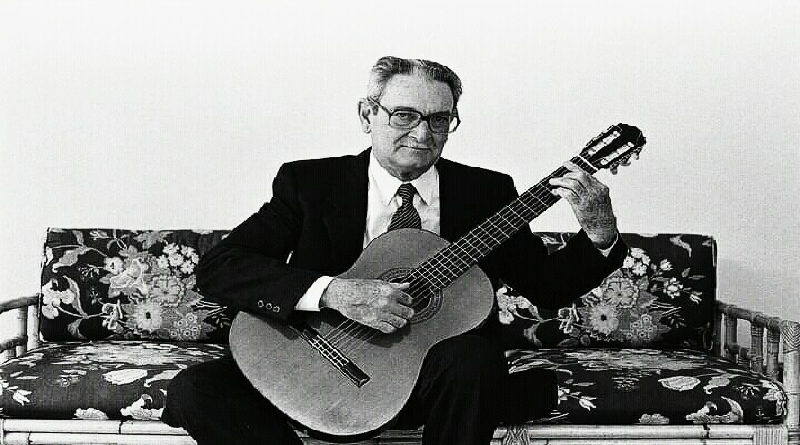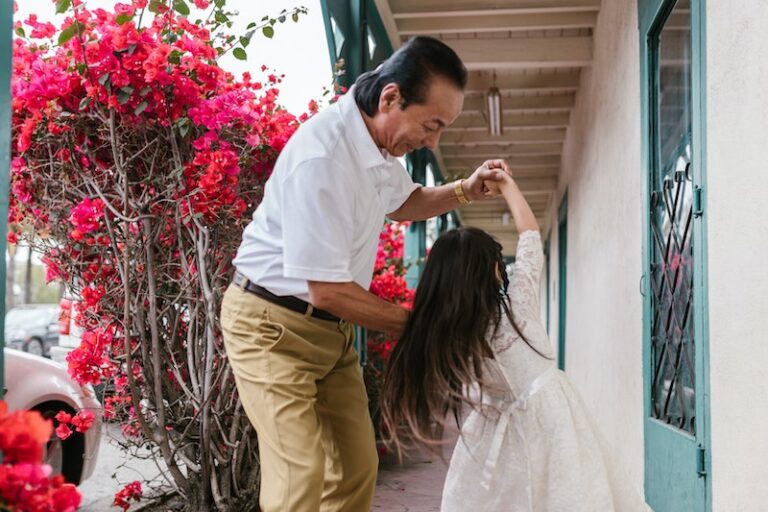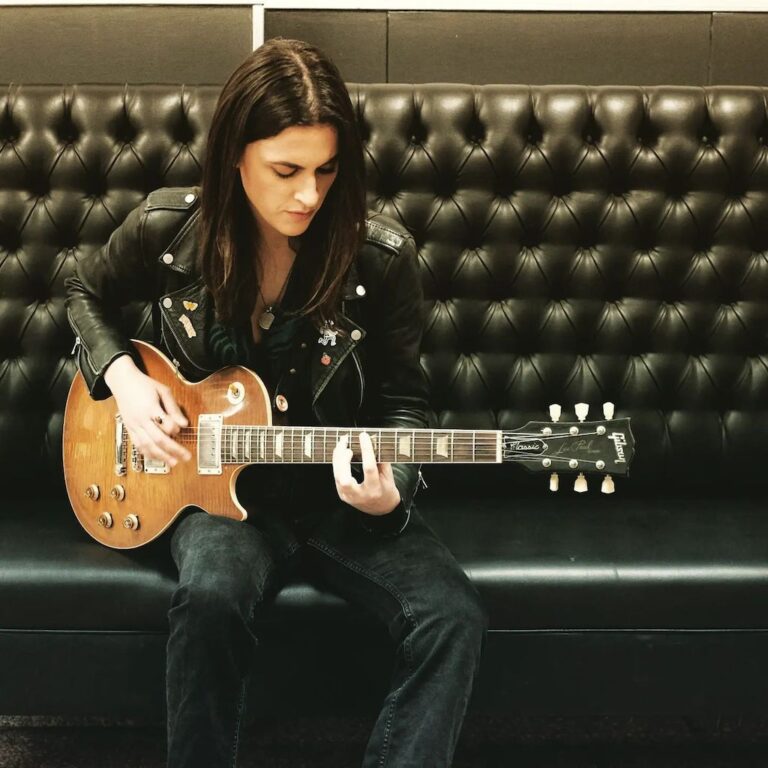Antonio Lauro’s Natalia
A Beautiful Masterpiece of Venezuelan Classical Guitar
Explore the history, structure, and cultural significance of one of the most beloved compositions in the classical guitar repertoire.
Introduction to Natalia
Antonio Lauro’s “Natalia” (Vals Venezolano No. 3) stands as one of the most beloved compositions in the classical guitar repertoire. Written in the traditional form of a Venezuelan waltz, this piece captures both the technical brilliance and emotive depth that define Lauro’s contributions to guitar music.
Composed between 1938 and 1940, “Natalia” was dedicated to the daughter of one of Lauro’s close friends. The piece begins with a gentle, flowing melody that immediately captures the listener’s attention. As the waltz progresses, the melody becomes more complex and dynamic, showcasing Lauro’s masterful understanding of the guitar’s capabilities.
What makes “Natalia” particularly special is how it balances technical complexity with emotional accessibility. Despite its intricate fingerings and harmonics, the piece remains approachable to listeners unfamiliar with classical guitar techniques, thanks to its memorable melody and rhythmic vitality.
Genre
Venezuelan Waltz (Vals Venezolano)
Designation
Vals Venezolano No. 3
Dedication
To the daughter of Lauro’s friend
Duration
Approximately 3-4 minutes
Listen to Natalia
Experience the beauty of this Venezuelan waltz masterpiece searching “Antonio Lauro Natalia” on your preferred music platform. Various interpretations of this piece may vary in tempo and expressive elements. We recommend listening to multiple recordings to appreciate the different approaches to this beautiful composition.

Antonio Lauro (1917-1986)
Antonio Lauro: The Composer
Antonio Lauro (August 3, 1917 – April 18, 1986) was a Venezuelan musician widely considered to be one of the foremost South American composers for the guitar in the 20th century. Born in Ciudad Bolívar, Venezuela, his father was an Italian immigrant, barber, and amateur guitarist who introduced young Antonio to music before passing away when Antonio was still a child.
After his family moved to Caracas, Lauro pursued formal musical studies in piano and composition at the Academia de Música y Declamación, where he studied under the composer Vicente Emilio Sojo. His musical journey took a decisive turn in 1932 when he attended a concert Paraguayan guitarist and composer Agustín Barrios. Deeply impressed, Lauro abandoned piano and violin to focus entirely on the guitar.
From 1933, Lauro studied with Raúl Borges, who introduced him to the classical guitar repertoire. Through these studies, he developed a profound understanding of the instrument’s capabilities, which would later inform his compositions, including the beloved “Natalia.”
“I am a composer rather than a performer.”
– Antonio Lauro
Like many South Americans of his generation, Lauro was a fervent cultural nationalist, determined to rescue and celebrate his nation’s musical heritage. As a member of the Trio Cantores del Trópico in 1935-1943 (Lauro sang bass and played both guitar and cuatro), he toured nearcountries to introduce them to Venezuelan music.
Musical Language
Lauro’s compositions blend classical European forms with Venezuelan folk traditions, creating a distinctive voice that honors his heritage while appealing to international audiences.
Guitar Innovation
His intimate understanding of the guitar led to compositions that exploit the instrument’s capabilities while remaining idiomatic and playable.
Cultural Legacy
Beyond composing, Lauro served as president of the Venezuela Symphony Orchestra and taught at prestigious institutions, ensuring his musical vision would influence future generations.
Life Timeline
1917
Born in Ciudad Bolívar, Venezuela
1932
Inspired Agustín Barrios to pursue guitar
1933-1943
Studied with Raúl Borges; member of “Trio Cantores del Trópico”
1938-1940
Composed “Natalia” and other Venezuelan waltzes
1948
Imprisoned for democratic beliefs during military junta
1980
Triumphant performance at London’s Wigmore Hall
1986
Passed away in Caracas after receiving Venezuela’s Premio Nacional de Música
The Venezuelan Waltz Tradition
To fully appreciate “Natalia,” one must understand the Venezuelan waltz tradition from which it emerged. Unlike its European counterpart, the Venezuelan waltz (vals venezolano) developed its own distinctive character after being introduced to Venezuela in the 19th century.
Origins & Evolution
The Venezuelan waltz emerged in the 19th century, with Federico Villena considered its father. Unlike the European waltz, Venezuelan composers adapted the form adding African and local rhythms, creating a unique national style.
These waltzes became extremely popular in Venezuelan society, typically played at social gatherings and formal events. The tradition evolved into two main types: the formal “hall waltz” typically performed on piano, and the “popular waltz” played on traditional instruments like violin, bandola, guitar, tiple, and cuatro.
Musical Characteristics
- Distinctive syncopation created hemiola (two measures of 3/4 becoming a single measure of 3/2)
- African rhythmic influences that distinguish it from European waltzes
- Strong melodic emphasis and emotional expressivity
- Integration of traditional Venezuelan folk elements
- Often played in triple meter but with complex rhythmic variations
Antonio Lauro’s interest in the Venezuelan waltz was sparked a concert featuring waltzes performed the distinguished Venezuelan pianist Evencio Castellanos. This experience convinced Lauro that the classical guitar deserved its own repertoire of Venezuelan waltzes.
Between 1938 and 1940, he composed his first works in this genre, including “Tatiana,” “Andreína,” and “Natalia.” These pieces would later be collectively known as “4 Valses Venezolanos” (Four Venezuelan Waltzes) and become some of his most celebrated compositions.
Cultural Context
What makes Lauro’s contribution so significant is how he followed in the tradition of composers like Béla Bartók, Bedřich Smetana, and Enrique Granados, who had elevated their own countries’ folk music to the level of concert art.
Through works like “Natalia,” Lauro accomplished the same for Venezuelan musical traditions, preserving them while introducing them to an international audience.
Federico Villena
Father of Venezuelan Waltz
Ramón Delgado Palacios
1867-1902
Heraclio Fernández
Composer of “El Diablo Suelto”
Musical Analysis of Natalia
“Natalia” exemplifies the Venezuelan waltz form while showcasing Lauro’s compositional genius. Its sophisticated structure, combined with an accessible melody, has made it a favorite among performers and audiences alike.
Form and Structure
“Natalia” follows a traditional ternary (ABA) form with distinct sections that create a musical journey:
A Section:
Presents the main theme in a lyrical, flowing manner with a distinctive melody over waltz accompaniment
B Section:
Introduces contrasting material in related keys, often with more rhythmic intensity and harmonic exploration
Return to A:
Brings back the main theme, sometimes with subtle variations or embellishments
This structure creates a satisfying musical narrative that takes the listener on a journey before returning home, providing both variety and cohesion.
Technical Elements
The piece employs several technical elements that make it both challenging and rewarding for guitarists:
Harmonics
Natural harmonics create bell-like tones that add texture and color to the composition. These are produced lightly touching the string at specific nodal points (typically at frets 5, 7, or 12) instead of pressing down.
Arpeggios
Flowing broken chords establish the waltz rhythm and create a sense of movement throughout the piece. These require finger independence and precise right-hand technique to execute cleanly.
Bass-Melody Balance
The guitarist must balance a clear melody line against the accompaniment, requiring control over dynamics and tone quality to differentiate between voice lines. This polyphonic playing is one of the most challenging aspects.
Syncopation
Venezuelan-style rhythmic shifts add complexity and interest to the piece. The characteristic hemiola patterns (shifting between 3/4 and 3/2 feels) require careful attention to maintain the proper dance-like character.
Dynamic Control
Expressive phrases demand careful control of volume and tone throughout the piece. The performer must shape each phrase with appropriate crescendos and diminuendos while maintaining the overall waltz character.
Harmony and Melody
Lauro’s harmonic language in “Natalia” blends traditional European harmony with Venezuelan influences:
- Primarily diatonic harmonies with strategic chromatic touches for color
- Rich use of secondary dominants to create forward momentum
- Melody that sings above the harmonic progression, often in the guitar’s middle register
- Strategic use of dissonance and resolution to create emotional tension and release
What Makes “Natalia” Special?
Perfect Balance
“Natalia” achieves a remarkable balance between technical challenge and musical accessibility, making it appealing to both performers and audiences.
Cultural Identity
The piece embodies Venezuelan musical identity while transcending cultural boundaries, speaking a universal musical language.
Emotional Depth
Beyond technique, “Natalia” carries emotional resonance, with its nostalgic melody evoking feelings of warmth and wistful beauty.
Performance Guide
Approaching “Natalia” requires attention to both technical aspects and cultural understanding. This guide offers insights for guitarists preparing to perform this beloved piece.
Technical Considerations
Right Hand Technique
The right hand plays a crucial role in bringing out the waltz character while maintaining clarity between melody and accompaniment:
Tip:
Slightly emphasize the bass note on beat one of each measure while keeping the accompaniment lighter to establish the waltz rhythm.
Tip:
Practice the piece slowly at first, focusing on tonal contrast between melody and accompaniment before gradually increasing tempo.
Left Hand Fingerings
Efficient left hand fingerings are essential for fluidity and expressive phrasing:
Tip:
Prepare position changes in advance, especially during sustained notes, to ensure smooth transitions.
Tip:
When shifting positions, use guide fingers (fingers that remain on the same string) to maintain contact with the fingerboard for greater security.
Harmonics
The natural harmonics in “Natalia” add a distinctive color that should ring clearly:
Tip:
Touch the string exactly over the fret wire (not behind it as with regular notes) when playing harmonics to achieve the clearest tone.
Tip:
Pluck closer to the bridge when playing harmonics for additional brilliance and projection.
Interpretative Approach
Tempo & Rubato
While “Natalia” is a waltz, avoid a rigid tempo that would make it mechanical. The piece benefits from subtle rubato that follows the natural contours of the melody.
Suggestion:
A moderate tempo (♩ = 110-120) allows for both rhythmic vitality and expressive phrasing. Take slightly more time at the ends of phrases before moving forward again.
Character & Mood
“Natalia” has a warm, nostalgic quality that should be reflected in your tone production and phrasing.
Suggestion:
Play with a warm, rounded tone, especially in the melody. Think of the piece as having a conversational quality, with phrases that flow naturally like speech.
Common Challenges
| Challenge | Solution |
|---|---|
| Balancing voices | Practice playing just the melody, then just the accompaniment, before combining them with appropriate dynamic balance. |
| Syncopated rhythms | Count aloud while practicing slowly, focusing on the precise timing of syncopations. Listen to traditional Venezuelan music to internalize the feel. |
| Position shifts | Identify challenging shifts and practice them in isolation, focusing on smooth movement and maintaining contact with the guitar. |
| Maintaining waltz character | Emphasize the first beat of each measure slightly while keeping the overall flow graceful and dance-like. |
Cultural Authenticity
While technical mastery is important, understanding the cultural context of the Venezuelan waltz will bring deeper authenticity to your interpretation.
Recommendation:
Listen to traditional Venezuelan waltzes to internalize their characteristic rhythms and inflections.
Recommendation:
Study recordings Venezuelan guitarists, particularly Alirio Díaz (a student of Lauro’s teacher, Raúl Borges), for insights into authentic performance practice.
Cultural Impact & Legacy
Antonio Lauro’s “Natalia” has transcended its origins to become not just a cornerstone of classical guitar repertoire, but a cultural ambassador for Venezuelan music worldwide. Its impact extends across multiple domains:
Cultural Preservation
Through “Natalia” and his other Venezuelan waltzes, Lauro accomplished a critical cultural mission: preserving and elevating traditional Venezuelan musical forms during a time when foreign influences threatened to overshadow local traditions.
Like the nationalist composers of Europe before him (Bartók, Smetana, Granados), Lauro transformed folk idioms into concert music without sacrificing their authentic character. Today, “Natalia” remains a vital link to Venezuela’s musical heritage, ensuring these traditional forms remain vibrant and accessible to global audiences.
Educational Significance
“Natalia” has become a staple in classical guitar education worldwide, appearing in curricula from conservatories to university guitar programs. The piece offers students important learning opportunities in several areas:
- Understanding South American rhythmic patterns
- Managing balance between melody and accompaniment
- Developing technical facility with harmonics and arpeggios
- Exploring cultural context in interpretation
Global Influence
Through the performances and recordings of artists like John Williams, Alirio Díaz, and many others, “Natalia” has reached audiences far beyond Venezuela’s borders. This widespread exposure has:
Inspired Composers
Influenced other composers to explore traditional forms from their own cultures and adapt them for classical guitar
Built Cultural Bridges
Introduced audiences worldwide to Venezuelan musical traditions and aesthetics
Enhanced Repertoire
Expanded the classical guitar repertoire with works that balance technical challenges with musical accessibility
“Antonio Lauro is the ‘Strauss’ of the guitar.”
– John Williams
This comparison to Johann Strauss II, the “Waltz King,” highlights Lauro’s mastery of the waltz form and his ability to create works of lasting beauty and significance within this genre.
Notable Performances & Recordings
“Natalia” has been interpreted countless guitarists around the world, each bringing their unique perspective to this beautiful piece. Below are some of the most influential recordings and performances that have helped cement this work’s place in the classical guitar canon.
Interpretative Approaches
Traditional Venezuelan
Emphasizes the piece’s folk origins with pronounced rhythmic character and dance-like qualities
European Classical
Focuses on clarity, balance, and refined dynamic control within a more formal concert approach
Contemporary Fusion
Incorporates modern techniques and interpretive freedom while honoring the piece’s fundamental character
Recommended Recordings
For copyright reasons, we cannot embed recordings directly. Search for these performers’ interpretations on your preferred music platform.
| Performer | Album | Interpretative Approach |
|---|---|---|
| Alirio Díaz | Guitar Music of Latin America | Authentic Venezuelan style with lively rhythmic character |
| John Williams | From the Jungles of Paraguay | Refined, elegant approach with immaculate technique |
| David Russell | Music of Antonio Lauro | Warm, expressive with careful attention to voicing |
| Ana Vidovic | Guitar Artistry | Lyrical approach with crystalline tone |
| Adam Holzman | The Venezuelan Waltzes of Antonio Lauro | Scholarly approach with historical context |
The Enduring Beauty of “Natalia”
Antonio Lauro’s “Natalia” represents a perfect synthesis of cultural tradition and artistic innovation. As a masterpiece of Venezuelan classical guitar, it embodies the distinctive character of the Venezuelan waltz while transcending cultural boundaries to speak a universal musical language.
Through its beautiful melody, technical sophistication, and emotional depth, “Natalia” continues to captivate performers and audiences around the world. It stands as a testament to Lauro’s artistic vision and his dedication to elevating his country’s musical heritage to the concert stage.
Whether you’re a guitarist seeking to add this piece to your repertoire, a music lover discovering Venezuelan musical traditions, or simply someone who appreciates beautiful music, “Natalia” offers a rich and rewarding musical experience that continues to resonate across generations.
Experience “Natalia”
To truly appreciate the beauty of this piece, listen to different interpretations, explore Venezuelan waltz traditions, and perhaps even attempt to learn it yourself. In doing so, you’ll connect with a rich musical heritage that continues to inspire musicians and audiences worldwide.






